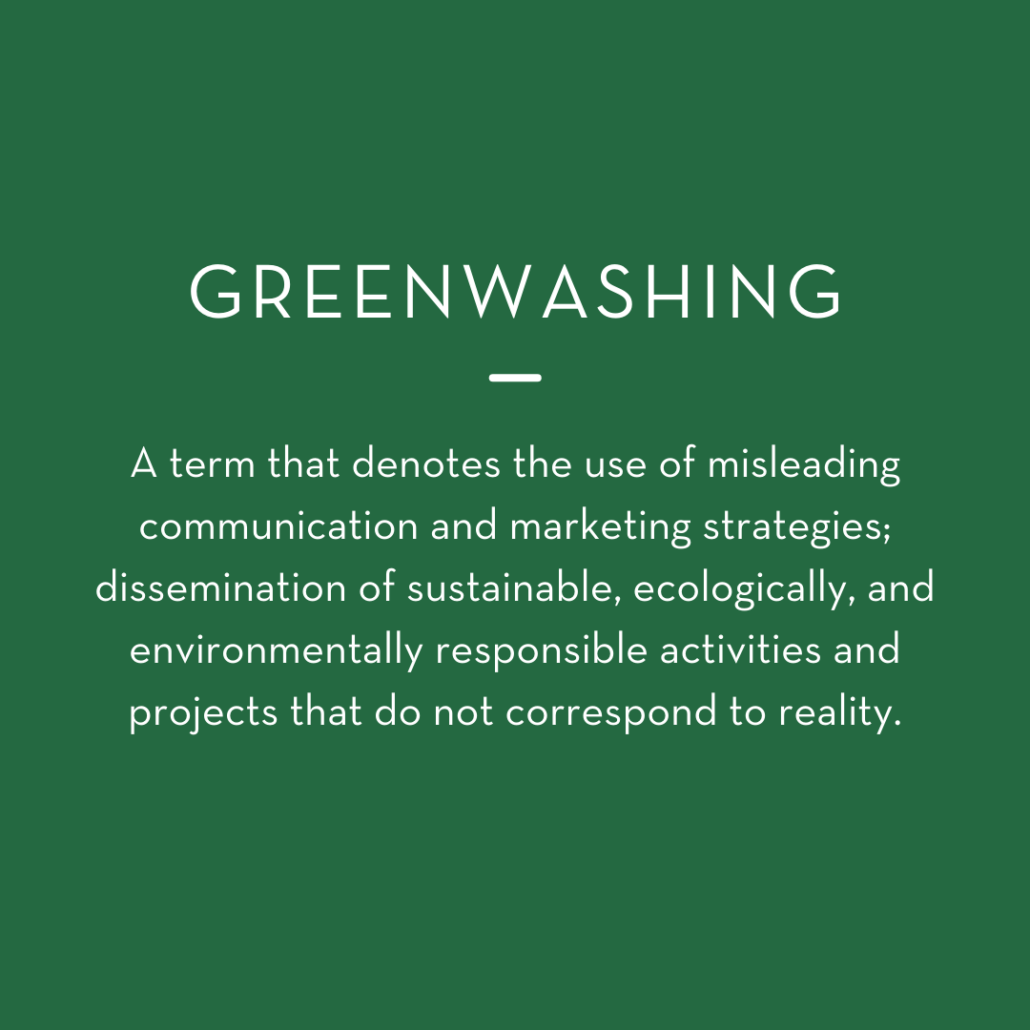Greenwashing e ESG
“While fashion is talking a lot more about sustainability, it’s harder than ever to distinguish between the companies that are actually making a difference and those that are guilty of greenwashing”, Business of Fashion.

ESG – “Environmental, Social, and Governance” – a very popular acronym in current times. It is repeatedly cited in social media, as well as in articles and videos from traditional media. ESG expresses how much and in what way companies present solutions to mitigate its impacts on the environment, build a more responsible world and maintain the best administrative processes possible.
ESG criteria are also used by many investors who prioritize sustainability criteria, that is, investors who are not only looking at financial indicators.
Another topic that is being discussed is the responsibility of brand’s communication, since greenwashing may not only mislead consumers and investors, but also characterize deceptive advertising and fraudulent performance.
Greenwashing greatly impairs decision-making and prevents investments for projects and companies that effectively adopt sustainable measures. Sustainability reports or ESG reports should not be seen merely as marketing or a PR document, but as a true concern for how companies are positioning themselves in the market. This shows how the role of communication is fundamental.
The Competition and Markets Authority (CMA) of the United Kingdom, an important consumer market for Brazilian products, informed The Guardian that it is preparing to disclose the names of large fashion companies in the market, “Consumers are being convinced to pay more for fashion products with big claims of their environmental credentials, but these companies have no evidence to back them up.”
In the same Helena Horton story, the CMA reports that it is investigating allegations from Britain’s fashion industry and will soon have a list of the worst offenders.
UK consumers are estimated to spend £54 billion annually on clothing and footwear, and this is expected to continue to grow for years to come.
“We believe that consumers’ growing demand for green products and their willingness to pay for these products has increased the incentive for companies to be seen as green, whether they are actually green or not,” Cecilia Parker Aranha, the CMA’s director of consumer protection.
No wonder, ESG policies have accelerated changes in stance and governance, positioning, branding, and public relations strategies.
Read more about how sustainability has accelerated changes in PR stances and strategies…
What to Look for in Sustainable Fashion Brands
All over the world, markets are defining how brands should redirect their efforts, in a major global push for the change that the industry needs to bring about.
“We’ve worked with Copenhagen Fashion Week and Creative Denmark to understand what it really means to be a responsible brand in the current climate, and what both designers and consumers can do better to look after the planet we call home”, Stine Goya.
“It’s a challenge to navigate through all information that is available for consumers and to make the right choice. Most brands that are wanting to make a change have a yearly responsibility policy document, and so do we. It’s a document that outlines our specific goals and targets for the year. We also release a yearly Responsibility Report, where the progress of the company is measured on different levels”; “Our aim is to be as transparent to our consumers as possible. We are not a 100 per cent responsible brand – and it is not something we claim or should claim to be. We are frank in our approach to what can be managed by our company given our size and are progressive in our aims for the future. But we are determined to become at least 90 per cent sustainable by 2025 and are on track to do so”, Stine Goya, Harpers Bazaar.
#sustentabilidade #greenwashing #ESG #relaçõespúblicas #RP #PR










